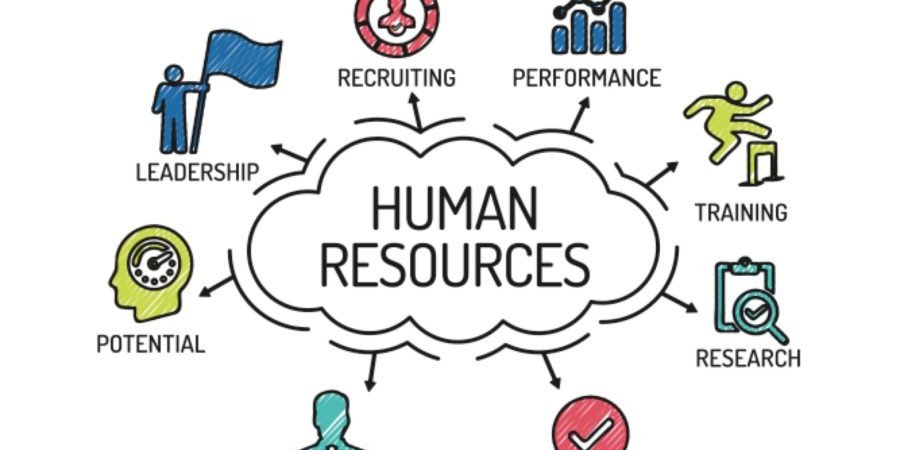The role of Human Resources has changed over the last few years, from one that was focused on recruitment to true Human resource management(HRM). Managing the existing workforce from a personnel standpoint allows companies to grow at whatever pace is required and navigate through sometimes turbulent waters in a post-#metoo era, representing some unique challenges for businesses.
In this article, we cover a few of the relevant points about the changes faced today.
Original HRM Education Wasn’t Enough
Anyone who has previously studied on a topic that related to HRM will often find that they run up on situations where they’re ill-equipped to handle them. Because of this, the University of Winnipeg has created follow-on courses that update their knowledge to make it relevant in today’s reality.
For example, the Advanced Certificate in People Management is a short course run over several weekends or weekdays to make its attendance more convenient. It covers topics such as resolving workplace conflicts, emotional intelligence in business environments, how to be a leader within the HRM environment, managing staff well, providing personal coaching, and enabling companies to embrace employee diversity.
Looking beyond the above certification, there’s also a longer, full-time Human Resource Management Diploma which includes collective bargaining, payroll compliance in Canada, the inclusion of indigenous perspectives as they affect the workplace, oral and written communications, and the basics of project management.
Fair and Safe Working Environments
The subject of a fair and safe working environment has entered the mainstream, especially since the #metoo phenomenon. While it was a small platform originally, Hollywood took it over, and it eventually morphed into a celebrity-led movement. Nevertheless, it is still highly relevant in the Canadian work environment.
The main drive behind #metoo has been the removal of harassment and misconduct which may or may not include sexual harassment or situations that might be considered abusive. Unfortunately, with the advent of social media, cases have been made on social media without any proof. Companies have been forced to play defense by suspending employees pending an internal investigation. Often, there’s only hearsay about what may (or may not) have happened, leaving businesses with a difficult decision to make.
In some cases, long-standing male employees have been let go despite a total lack of evidence. This is now leading to wrongful termination lawsuits against former employers. For human resources, it represents a real challenge to come down on the right side of difficult interpersonal situations and still be seen to be doing the right thing. Indeed, it’s perhaps the largest current challenge facing HRM teams today.
Performance and People Management
Along with wrestling with interpersonal concerns, HRM is at least partially involved with performance reviews (if the departmental manager hasn’t taken complete control of them). With the push for better results from everyone in an organisation, performance metrics are often the difference between an outperforming (or underperforming) department. Ultimately, individual team members are accountable for their results, with the poorest performer likely to have a difficult conversation with the HRM team.
The changing environment for HR departments prevents managers from getting bored. There’s always some fire to put out or a dispute to resolve to bring the workplace back to harmony.
This article does not necessarily reflect the opinions of the editors or management of EconoTimes.



 China Adds Domestic AI Chips to Government Procurement List as U.S. Considers Easing Nvidia Export Curbs
China Adds Domestic AI Chips to Government Procurement List as U.S. Considers Easing Nvidia Export Curbs  Intel’s Testing of China-Linked Chipmaking Tools Raises U.S. National Security Concerns
Intel’s Testing of China-Linked Chipmaking Tools Raises U.S. National Security Concerns  SpaceX Edges Toward Landmark IPO as Elon Musk Confirms Plans
SpaceX Edges Toward Landmark IPO as Elon Musk Confirms Plans  Evercore Reaffirms Alphabet’s Search Dominance as AI Competition Intensifies
Evercore Reaffirms Alphabet’s Search Dominance as AI Competition Intensifies  ADB Approves $400 Million Loan to Boost Ease of Doing Business in the Philippines
ADB Approves $400 Million Loan to Boost Ease of Doing Business in the Philippines  Microsoft Unveils Massive Global AI Investments, Prioritizing India’s Rapidly Growing Digital Market
Microsoft Unveils Massive Global AI Investments, Prioritizing India’s Rapidly Growing Digital Market  Trump’s Approval of AI Chip Sales to China Triggers Bipartisan National Security Concerns
Trump’s Approval of AI Chip Sales to China Triggers Bipartisan National Security Concerns  ANZ Faces Legal Battle as Former CEO Shayne Elliott Sues Over A$13.5 Million Bonus Dispute
ANZ Faces Legal Battle as Former CEO Shayne Elliott Sues Over A$13.5 Million Bonus Dispute  Azul Airlines Wins Court Approval for $2 Billion Debt Restructuring and New Capital Raise
Azul Airlines Wins Court Approval for $2 Billion Debt Restructuring and New Capital Raise  JD.com Pledges 22 Billion Yuan Housing Support for Couriers as China’s Instant Retail Competition Heats Up
JD.com Pledges 22 Billion Yuan Housing Support for Couriers as China’s Instant Retail Competition Heats Up  Westpac Director Peter Nash Avoids Major Investor Backlash Amid ASX Scrutiny
Westpac Director Peter Nash Avoids Major Investor Backlash Amid ASX Scrutiny  Trello Outage Disrupts Users as Access Issues Hit Atlassian’s Work Management Platform
Trello Outage Disrupts Users as Access Issues Hit Atlassian’s Work Management Platform  Coca-Cola’s Costa Coffee Sale Faces Uncertainty as Talks With TDR Capital Hit Snag
Coca-Cola’s Costa Coffee Sale Faces Uncertainty as Talks With TDR Capital Hit Snag  Samsung SDI Secures Major LFP Battery Supply Deal in the U.S.
Samsung SDI Secures Major LFP Battery Supply Deal in the U.S.  Nvidia Develops New Location-Verification Technology for AI Chips
Nvidia Develops New Location-Verification Technology for AI Chips  Apple App Store Injunction Largely Upheld as Appeals Court Rules on Epic Games Case
Apple App Store Injunction Largely Upheld as Appeals Court Rules on Epic Games Case  Moore Threads Stock Slides After Risk Warning Despite 600% Surge Since IPO
Moore Threads Stock Slides After Risk Warning Despite 600% Surge Since IPO 































